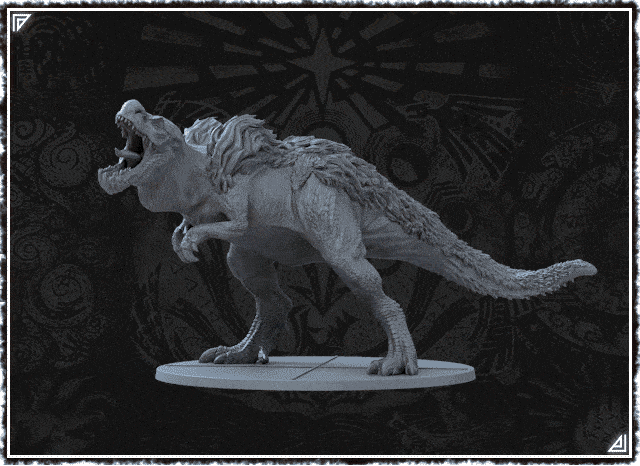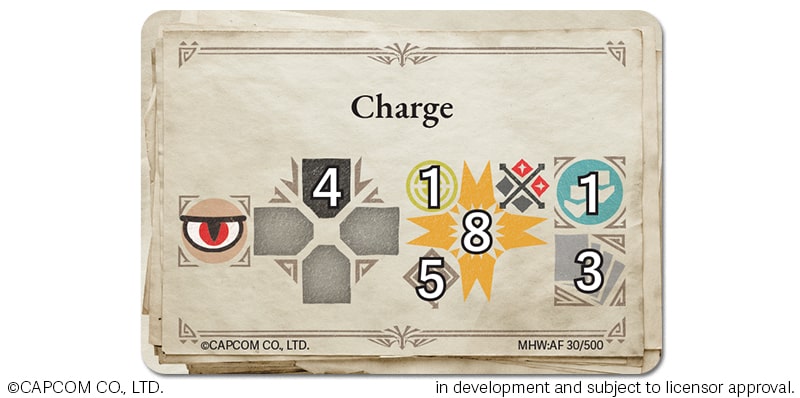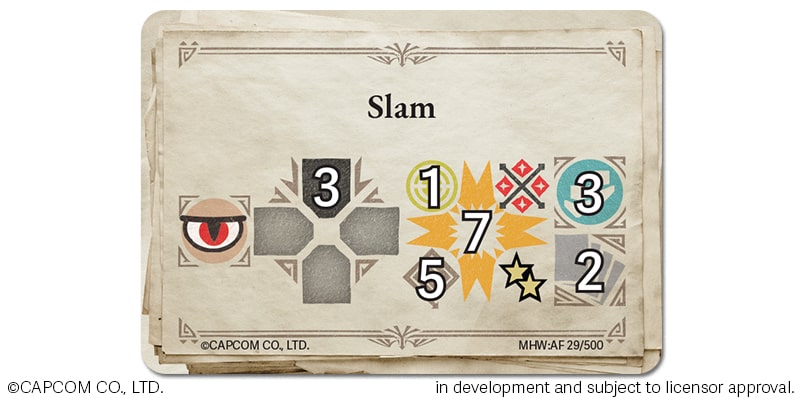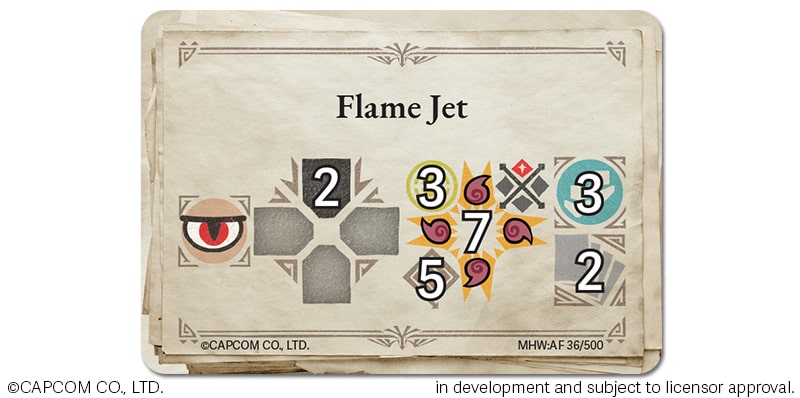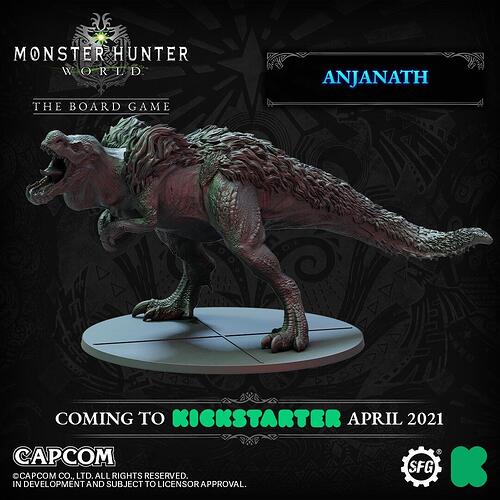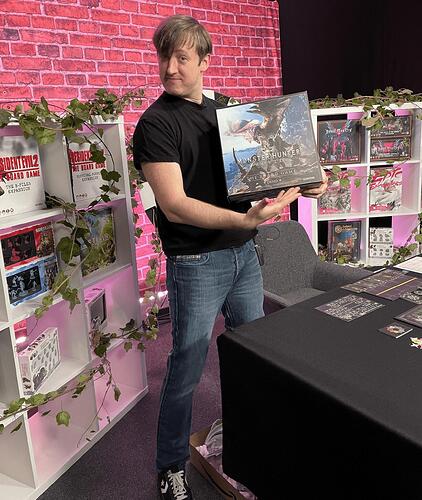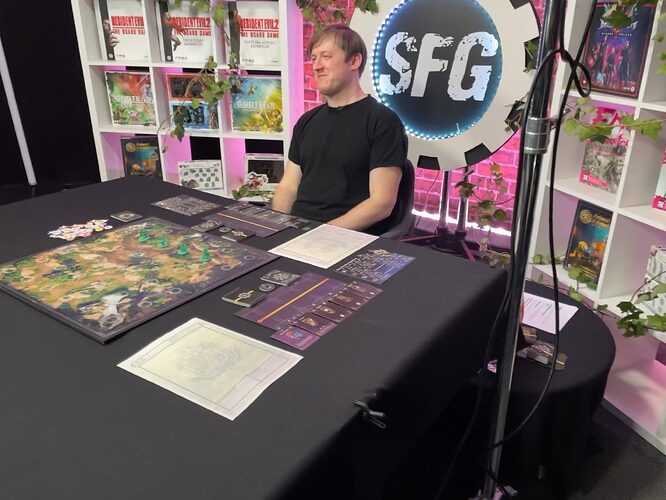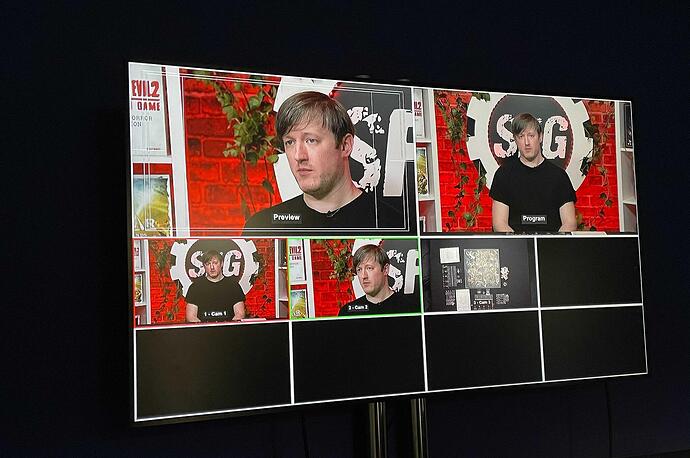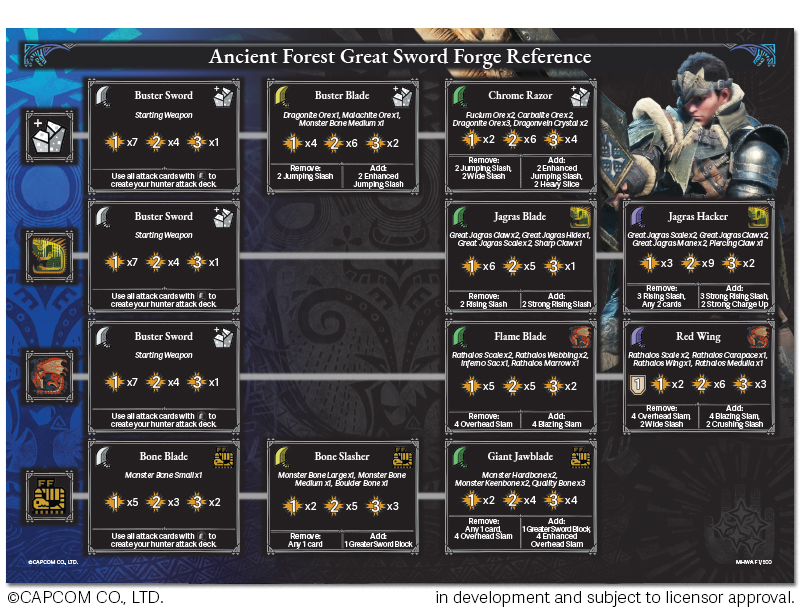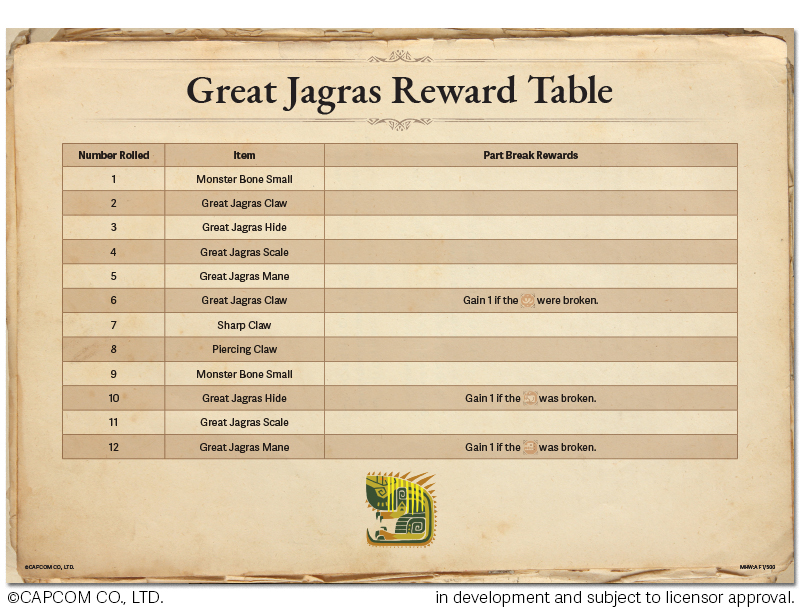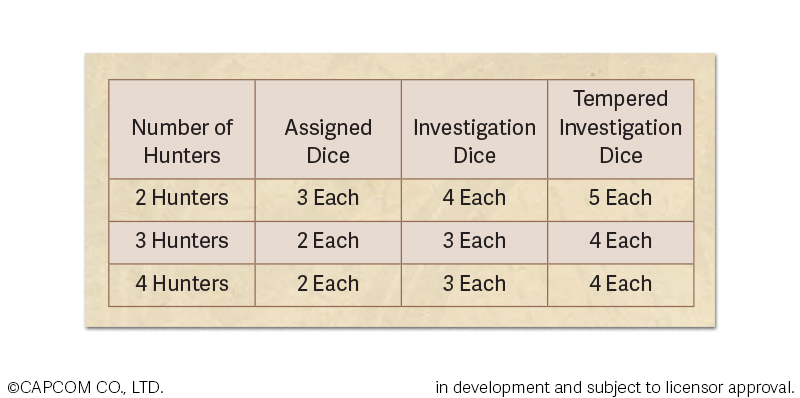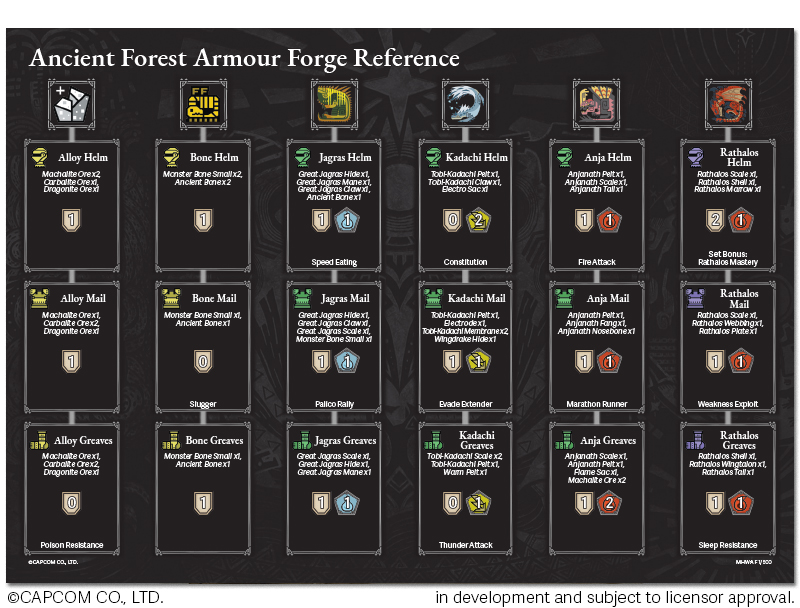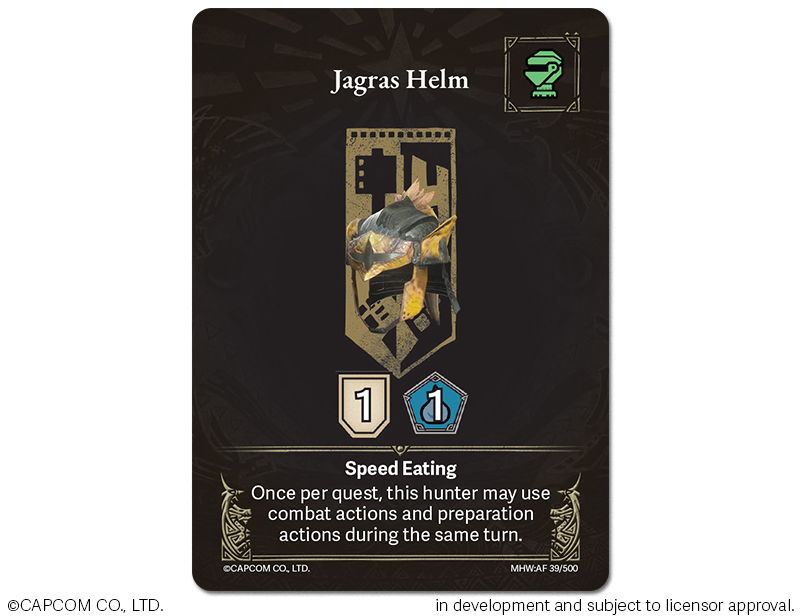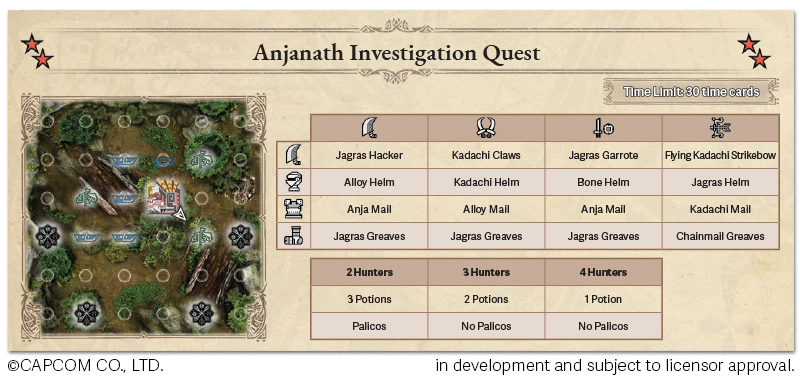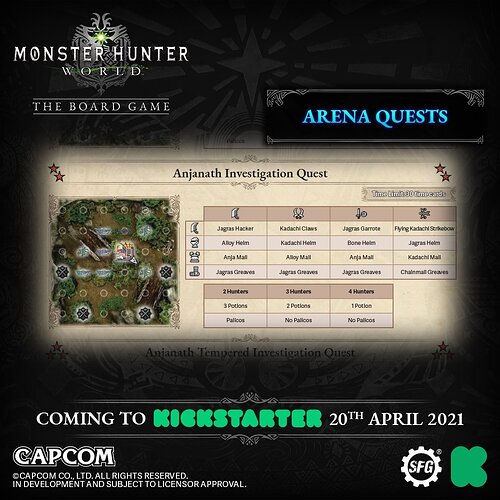Oui c’est Anjanath …
Anjanath
From the journal of Jamie Perkins, Lead Developer
We’ve encountered greedy Great Jagras and electrifying Tobi-Kadachi.
Now, it’s time for something with more teeth — and fire.
Best known for being aggressive, Anjanath prowls the Ancient Forest in a constant search for prey. This predator will attack without provocation, and its bite is far worse than its bark.
But, surely, you won’t face this ferocious foe until you’re ready… right?
Well, actually, that’s up to you.
Once you complete your Great Jagras assigned quest, Monster Hunter World: The Board Game gives you total freedom over which monsters you hunt and in what order.
So, if you’re feeling brave, you could actually hunt Anjanath before forging all the equipment you can from Great Jagras and Tobi-Kadachi.
We just wouldn’t recommend it.
Physiology
Anjanath is unlike anything we’ve faced before.
A step up from Tobi-Kadachi, Anjanath has even higher starting health and body part armour.
If you’ve got access to any water elemental damage (hint: Great Jagras) now would be a good time to equip it.
As you can see, Reckless Aggression makes for a mobile and challenging encounter. Melee hunters beware: if you deal enough damage, Anjanath will move each time you attack.
In short, Anjanath is a relentless predator. It will chase you around the board. Really.
As well as Reckless Aggression, Anjanath has many behaviours that target the furthest hunter. Again, expect this monster to move, a lot. This isn’t a beast you can hide from.
Oh, and did I mention the fire? Because it breathes fire. Which, like its high mobility, becomes even more dangerous as you take on the harder 2 and 3 star Anjanath quests.
You might also have noticed Reckless Aggression causes Anjanath to move 2 nodes toward the furthest hunter. But what if there are two hunters at an equal distance?
That’s where threat level comes in.
Each hunter has a numbered token that tells you their threat level. (This is the same token you’ll flip to show when you’ve taken your turn.)
If there’s ever a monster behaviour that could target two hunters in different locations, that threat level acts as a tiebreaker.
Naturally, the monster will want to go after the biggest threat!
Got a low threat level? Don’t get too comfortable. Your level can change during the hunt, so you might find yourself the next target!
Now, back to the physiology card.
On a positive note, Anjanath is the first monster we’ve seen with four breakable body parts instead of three. It may be tough to take down, but you’ve also got more opportunity to gain rewards.
Behaviours
Between its sharp teeth and ability to breathe fire, Anjanath’s main arsenal lies in its head.
So, it’s not surprising that’s where the majority of its attacks originate from. Expect crippling bites and searing bursts of flame!
To start with, let’s look at a simple and brutal attack:
Targeting the farthest hunter, Anjanath will charge (get it?) 4 nodes in their direction.
With that much movement, what if the monster needs to change direction?
Well, monsters only change direction while moving, so it’s really important to check each behaviour to see whether the monster moves or attacks first.
Monsters will turn to face their target before and after each node of movement, which means they can change direction multiple times!
Once Anjanath reaches its target with Charge, it will deal a massive 8 damage.
Unless they can dodge, of course, but at dodge 5 Charge is a tough one to avoid!
(For a recap on dodging monster attacks, turn back to the Tobi-Kadachi section of this journal.)
A quick attack, Charge only allows one hunter to take a turn afterward. However, that hunter can play up to three attacks, so choose someone who can deal serious damage!
Don’t stop to catch your breath, because Anjanath is about to crush you with Slam:
Luckily, Slam involves less movement than Charge. Unluckily, it attacks hunters in every direction.
And to make matters worse, Slam will also stun anyone it hits, forcing you to remove a card from your hand and place it face down on your stamina board — meaning you’ll have less space and options to act next turn.
If you want to retaliate, now’s your chance. Because Slam is slower than Charge, three hunters will get to take a turn after this behaviour lands.
Finally, we have Flame Jet, one of Anjanath’s signature fire breathing attacks:
Flame Jet is the first range 3 monster behaviour we’ve seen.
Combine that range with its 2 nodes of movement, and the fact it will hit anyone in the Anjanath’s front arc, and you’ll see how Flame Jet can hit even cautious hunters trying to keep their distance.
If you’re not careful, it might burn your whole party at once!
Plus, because it’s a fire elemental attack, most armour won’t help you resist the damage. Be sure to bring some fire resistant equipment, or be prepared to dodge behaviours like this every time.
Speaking of which: at dodge 5, Flame Jet won’t be easy to avoid.
If you do withstand the attack, you’ll get the chance to hit back. Like Slam, Flame Jet is one of the slower Anjanath behaviours that lets three hunters take a turn.
Make the most of them before it continues its onslaught!
